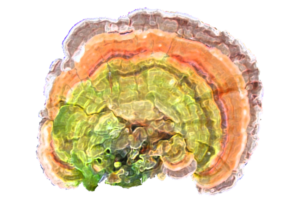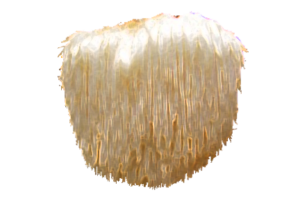Takashi Mizuno
Abstract
Since a cultivation technique applied on the fungus bed, using bags and bottles, was established recently in Japan, together with a cultivating technique on the material woods, the Hericium erinaceus (Bull.: Fr.) Pers. has ranked among the cultivating mushrooms available annually on the market. We isolated, on the basis of the HeLa cell screening method the three types of acid substances−Y-A-2, hericenone A, and hericenone B−from the fruiting body of H. erinaceus. In addition, we observed that the acid substance, or Y-A-2, has not only HeLa cell growth-inhibiting activity, but also pollen-tube growth-inhibiting activity, as the same of hericerine growth-inhibiting substance for the germination of pollen-tube, under concentration of more than 100-125 mg/l of the substance. Hericenones C, D, E, F, G, and H were found to induce synthesis of nerve growth factor, which is associated with an ameliorative effect in Alzheimer’s dementia, and this also formed the basis of a newly developed bioassay. Fruiting bodies of H. erinaceus were extracted in series with hot water (100°C), 1% ammonium oxalate (100°C), and 5% sodium hydroxide (30°C) to generate the polysaccharides FI, FII, FIII-1, and FIII-2. Each of these was then further fractionated and purified by ion-exchange chromatography, gel-filtration chromatography, and affinity chromatography, to give a final total of 15 polysaccharides. In an assay for antitumor activity, five of the polysaccharide fractions (FI0-a-β, FI0-a-α, FI0-b, FII-1, and FIII-2b) proved strongly positive, and also exhibited a prominent effect on longevity. In China, the drug “Wei Le Xin Chong Ji” is available as an excellent remedy for chronic disease. The polysaccharides (HEPS) in the fruiting body of H. erinaceus may have beneficial effects on stomach, esophageal, and skin cancer among others, owing to their influence on immune function. In addition, it has been found that H. erinaceus (its fruiting body, mycelium, and its products in the medium), widely used in recent years for research and development in Japan, contains some lower molecular weight pharmaceutical constituents, such as the novel phenols (hercenon A and B) and novel fatty acids (Y-A-2) mentioned previously that may have chemotherapeutic effects on cancer.
Other polysaccharides fractionated from H. erinaceus, such as xylan, glucoxylan, heteroxyloglucan, and their protein complexes have biological response modifier characteristics, and thus priority should be placed on then-possible benefit in immunotherapy.
Moreover, it may be anticipated that the phenol-analogous compounds (hercenons C, D, E, F, G, and H) inducing the synthesis of NGF might have an ameliorative effect in Alzheimer’s dementia cases.
Because it has been shown that acid (Y-A-2) and neutral (hercerin) components isolated from the pileus of H. erinaceus have a growth-inhibiting activity and block pollen germination tubes at low concentrations, it is also probable that they may find applications as agricultural chemicals.


